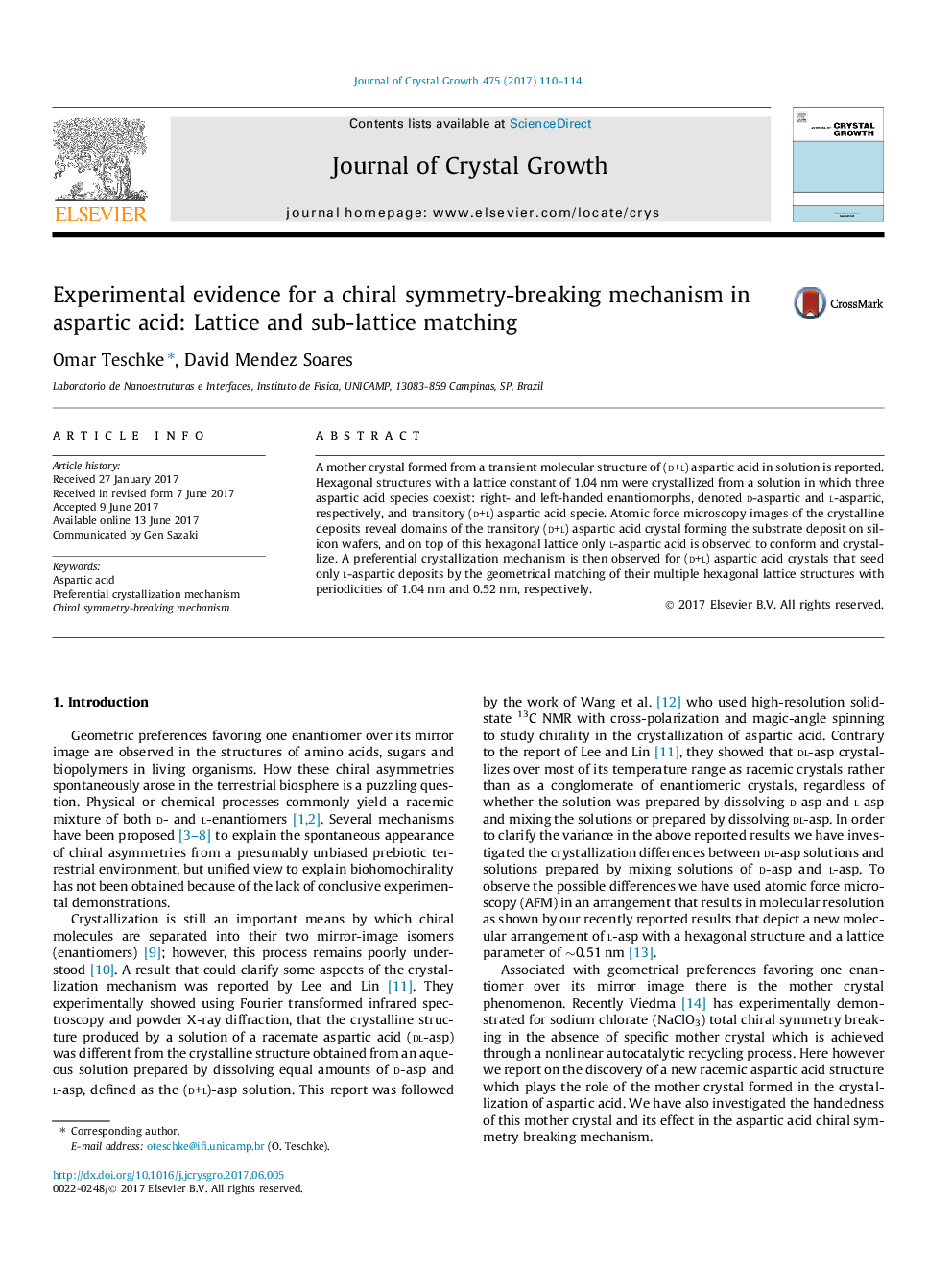| Article ID | Journal | Published Year | Pages | File Type |
|---|---|---|---|---|
| 5489326 | Journal of Crystal Growth | 2017 | 5 Pages |
Abstract
A mother crystal formed from a transient molecular structure of (d+l) aspartic acid in solution is reported. Hexagonal structures with a lattice constant of 1.04Â nm were crystallized from a solution in which three aspartic acid species coexist: right- and left-handed enantiomorphs, denoted d-aspartic and l-aspartic, respectively, and transitory (d+l) aspartic acid specie. Atomic force microscopy images of the crystalline deposits reveal domains of the transitory (d+l) aspartic acid crystal forming the substrate deposit on silicon wafers, and on top of this hexagonal lattice only l-aspartic acid is observed to conform and crystallize. A preferential crystallization mechanism is then observed for (d+l) aspartic acid crystals that seed only l-aspartic deposits by the geometrical matching of their multiple hexagonal lattice structures with periodicities of 1.04Â nm and 0.52Â nm, respectively.
Keywords
Related Topics
Physical Sciences and Engineering
Physics and Astronomy
Condensed Matter Physics
Authors
Omar Teschke, David Mendez Soares,
